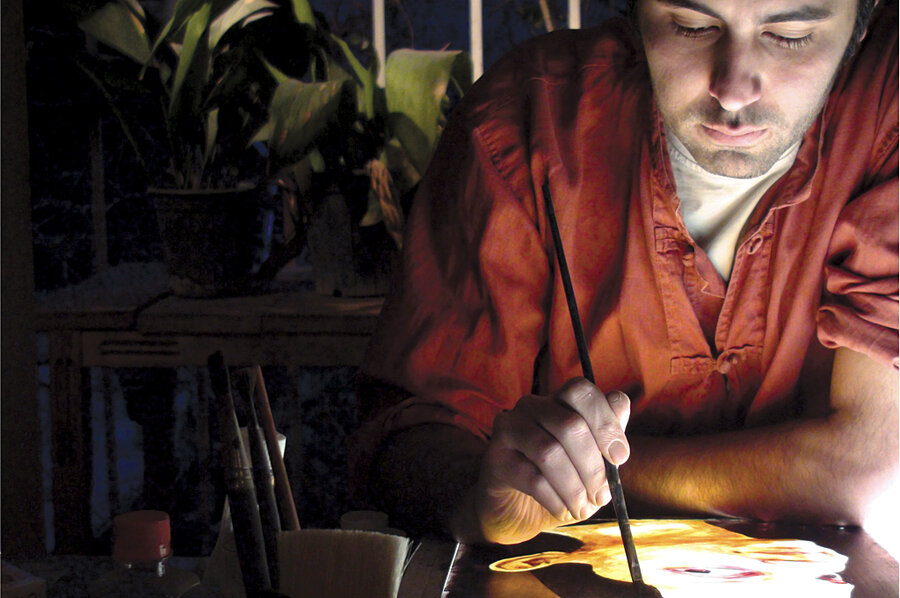Iran's artists struggle to find space for expression
Loading...
| Tehran, Iran
• A local, slice-of-life story from a Monitor correspondent.
Six years ago in central Tehran, Iranian painter Pooya Razi recorded a heated conversation with his conservative neighbor. Disapproving of Mr. Razi’s artistic lifestyle, the man threatened to report him for inviting unmarried girls to his abode, which could lead to eviction. Now, in a different apartment nearby, surrounded by easels, paint thinner, and a heap of sketches, Razi and his team of animators are transforming the recording into a short film.
A mile away, in a crumbling, turquoise-painted storage room that serves as his atelier, Mohammad Ghazali leafs through one of his latest projects – photographing shop windows after closing hours – for which police twice arrested him. “People abroad like to say the situation is bad here after the election, but somehow I still manage to produce,” he says.
For a city of 12 million, Tehran’s independent art scene is minuscule. Its members are marginalized not only in numbers, which are constantly shrinking as prospects of better work lure them to Europe, but also by the sociocultural norms of the Islamic Republic itself.
“Any movement [resembling] a dance has to be censored,” says Niusha R., a local ballerina who requested that her full name not be used for fear of persecution. Dancing is technically forbidden in Iran, and female dancers survive here by either performing for female-only audiences or by limiting their expressions to “harmonized movements.” The results are often perverse – choreographers choose young males to perform sensual pieces, while females are veiled and limited to stiff, comical poses.
Though they are all but banished from mainstream society, local artists still manage to find outlets for authentic expression. Kiarash Ghavidel, a local art gallery manager, estimates there are 20 galleries in Tehran that, despite tough guidelines, support talented young artists. “Everything happens in Iran,” says Niusha, who is currently working with a small local theater. “If you cannot do it publicly, it will exist underground.”





